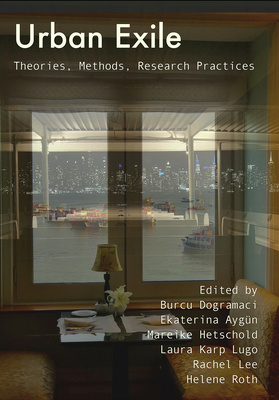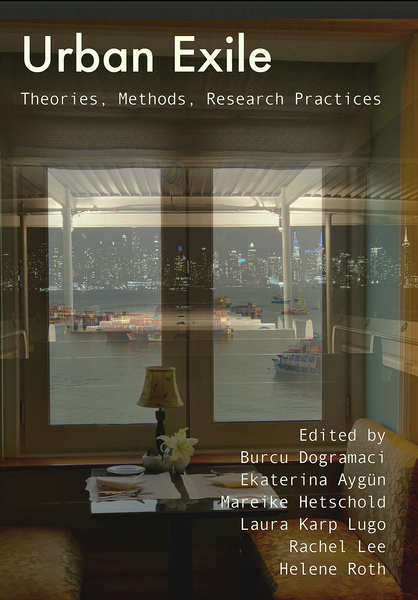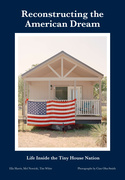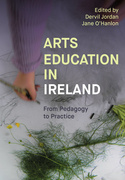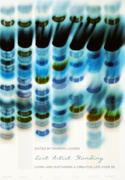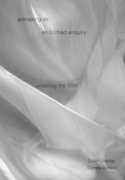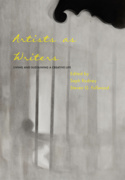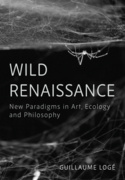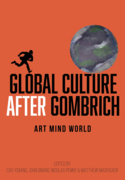Urban Exile (Book)
Theories, Methods, Research Practices
Explores cities of exile from different perspectives and presents different methods and sources for exile and urban studies. Internationally recognized scholars writing on themes including mapping, oral history, queerness, photography. A significant contribution to the theory and methodology of research on historical exile. 90 b/w, 18 col. illus.
A PDF version of this book is available for free in Open Access: Urban Exile. It has been made available under a Creative Commons Attribution-NonCommercial 4.0 International (CC BY-NC 4.0) License.
Edition
Explores cities of exile from different perspectives and presents different methods and sources for exile and urban studies. The essays are written by internationally recognized scholars, and contain a wide range of themes including mapping, oral history, queerness, photography. This book will make a significant contribution to the theory and methodology of research on historical exile, cities and modernities, as well as present multidisciplinary exile research from an urban perspective.
With a blend of case studies, and theoretical approaches, it interweaves histories of modernism and exile in different urban environments and focuses on historical dislocations in the first half of the twentieth century, when artistic and urban movements constituted themselves in global exchange. Although this book takes a historical perspective, it is written with an awareness of current flight movements and will make a significant contribution to the theory and methodology of research on exile.
The knowledge of previous historical exile experiences is important for the understanding of contemporary flight movements: after all, these are not singular phenomena. For migration movements in the first half of the 20th century and for those of today, it is equally possible to speak of urban centres of attraction for refugees: Today, Berlin is a European metropolis of exile; in the 1930s and 1940s, Paris, Prague, London, New York, Istanbul and Shanghai were destinations for refugees.
With contributions from Maddalena Alvi, Ekaterina Aygün, Claudia Cendales Paredes, Julia Eichenberg, Margit Franz, Nils Grosch, Mareike Hetschold, Louis Kaplan, Laura Karp Lugo, Katya Knyazeva, Merve Köksal, Rachel Lee, Chris McConville, Anna Messner, Alexis Nuselovici, Robert Pascoe, Valentina Pino Reyes, Helene Roth, Valeria Sánchez Michel, Marine Schütz, Seza Sinanlar Uslu, Felicitas Söhner, Mareike Schwarz, Marina Sorokina, Xin Tong, Diana Wechsler, Jessica Williams Stark and Federico Vitelli.
Burcu Dogramaci is a professor of 20th Century and Contemporary Art History at the Ludwig-Maximilians-Universität Munich (LMU). In 2016 she was been awarded an ERC Consolidator Grant and lead the research project “Relocating Modernism: Global Metropolises, Modern Art and Exile” (METROMOD).
Ekaterina Aygun graduated from Istanbul Bilgi University with a master’s degree in History. She currently pursues her doctoral research project (LMU Munich) that deals with Russian-speaking émigré artists in Istanbul at the beginning of the 20th century.
Mareike Hetschold studied art history, literature and Italian in Munich and Venice. She is a doctoral researcher with the ERC project “Relocating Modernism: Global Metropolises, Modern Art and Exile” (METROMOD) at the LMU in Munich.
Laura Karp Lugo holds a PhD from Panthéon-Sorbonne University (2014), that has been awarded the Prize of the Musée d’Orsay. She is currently a Researcher and Assistant Professor at University of Lorraine (Nancy) and a researcher at the Ludwig-Maximilians Universität (Munich) in the ERC project “Relocating Modernism: Global Metropolises, Modern Art and Exile” (METROMOD).
Rachel Lee is an Assistant Professor at the Chair of History of Architecture and Urban Planning, TU Delft and an Associated Researcher on the ERC project Relocating Modernism: Global Metropolises, Modern Art and Exile” (METROMOD).
Helene Roth is Research Assistant in Art History at the Ludwig-Maximilians-Universität (LMU) in Munich and researcher in the ERC project “Relocating Modernism: Global Metropolises, Modern Art and Exile” (METROMOD).
Encountering Urban Exile: Theories, Methods, Research Practices – 01
An Introduction
Burcu Dogramaci, Ekaterina Aygün, Mareike
Hetschold, Laura Karp Lugo, Rachel Lee and Helene Roth
PART 1: SOURCING TRACES 21
- Expulsion from Exile: Tracking the Presence and Absence of 22
German-speaking Dealers in Paris, 1910–1925
Maddalena Alvi
- Taming the Polyp: Address Books and their Impact on Wartime 32
Exile in London
Julia Eichenberg
- Close Reading Istanbul: Through the Lens of Two Almanacs 45
by Russian-speaking Émigrés in the 1920s
Ekaterina Aygün
- ‘Mobile Exile’ and Urban Musical Theatre in the 1930s 60
Nils Grosch
- Oral History in Exile Studies – Potentials and Limitations 72
Felicitas Söhner
- Movement – A Conversation with Artist Michaela Melián 84
Burcu Dogramaci
PART 2: PRACTICING THE URBAN 95
- An Exile’s Guide: Ernst Schaeffer’s Pictorial Bombay and 96
the Construction of Bombay’s Touristscape
Margit Franz and Rachel Lee
- Photographic Practices in Cities of Exile: Camera Views on 120
Tel Aviv and New York
Anna Sophia Messner and Helene Roth
- The Exilic Vision of a Once Fashionable Quarter: 140
Danila Vassilieff in Interwar Fitzroy
Robert Pascoe and Chris McConville
- Queering Exile London: Dislocations, Hidden Histories and 146
Gendered Spaces
Burcu Dogramaci
PART 3: MAPPING/SPATIALIZING SITES 169
- Theatre After the End of Theatre: Abandoned Theatres in Chile 170
Valentina Pino Reyes
- Redeveloping the Heritage of Migration: The Shanghai Jewish 182
Refugees Museum and Urban Transformation
Xin Tong
- Mapping the Russian Diaspora in Shanghai 194
Katya Knyazeva
- Mapping Istanbul’s Pera District between Arrivals and Departures 206
Merve Köksal and Seza Sinanlar Uslu
- Russian Belgrade: In-between Alive and Dead 225
Marina Sorokina
PART 4: SITUATING EXPERIENCE 239
- Urban Exile: The Case of the Nazi Ghetto 240
Alexis Nouss
- Booked for Exile: Leo Steinberg’s Urban Passages and 250
Textual Homelands
Louis Kaplan
- Between Europe and America: Metropolitan Exchanges in the 261
Context of International Antifascism
Diana Wechsler
- Urban Exile: Bogotá in the First Half of the 20th Century 273
Claudia Cendales Paredes
- (Re)routing and (Re)rooting in Urban Exile: Exploring Villa 287
Ocampo in Buenos Aires and Jassim House in Bombay with
Actor-Network-Theory
Mareike Schwarz
PART 5: PLACE-MAKING/BELONGING 311
- From Hamburg to Cape Town: The Denizen Photography of 313
Else and Helmuth Hausmann
Jessica Williams Stark
- Suzhou River and Garden Bridge: Reading Images of 327
Exile in Shanghai
Mareike Hetschold
- The Territorial Dimension of Spanish Republican 342
Exile in the Cities of Argentina
Federico Martín Vitelli
- Calle de López or Spain in Mexico 352
Valeria Sánchez Michel
- Reinhabiting the City as an Artistic Open Space: Urban 361
Imprints of Exile Artists in Buenos Aires and Marseille in
the 20th Century
Laura Karp Lugo and Marine Schütz
Notes on the Contributors 377
Index 391

